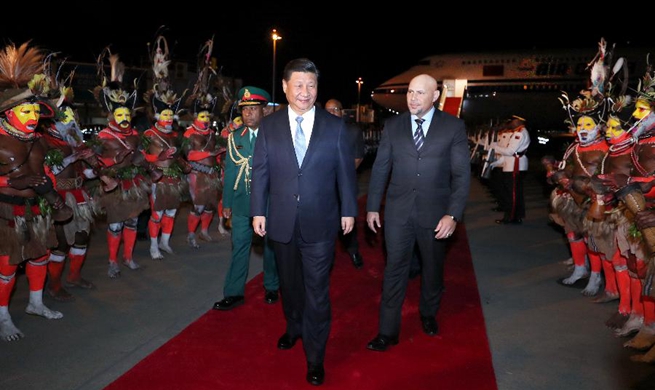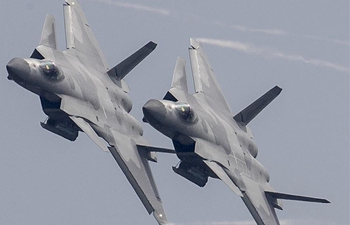XI'AN, Nov. 15 (Xinhua) -- When Chinese explorer Zheng He commanded expeditionary voyages and opened up the Maritime Silk Road about 600 years ago, it was the stars that helped him navigate his fleet through the boundless oceans.
The ancient Chinese invented astronavigation and Zheng He was among the first to use it during many of his voyages. The position and course of his fleet were determined by observing the stars and constellations, such as the Big Dipper, the Southern Cross, and the Lyra constellation.
Inhabiting the northern hemisphere, Chinese people on land also used to navigate by observing the Big Dipper. Nowadays, the navigation satellite system developed by China is called BeiDou, the Chinese word for the Big Dipper.
The BeiDou system opened to China in 2000 and the Asia-Pacific region in 2012. When the system is completed in 2020, it will be the fourth largest global satellite navigation system after the U.S. GPS system, Russia's GLONASS and the European Union's Galileo.
As one of the core providers of global navigation services, the BeiDou system hopes to cooperate with other global satellite systems, providing free research and being used in rescue services around the world. It has been recognized by the International Civil Aviation Organization, International Maritime Organization, the 3rd Generation Partnership Project.
"The BeiDou Navigation Satellite System has been used in the Safe City Project in Phongsaly in northern Laos. It is used to maintain public security, and position police forces and emergency vehicles," said Houangsanasay Ping, a Laotian scholar at the 13th meeting of the International Committee on Global Navigation Satellite Systems, held in Xi'an, Shaanxi Province, from Nov. 4 to 9.
In its next phase, the application of the BeiDou system will be tailored to suit customers' needs and will serve to monitor landslides and dam deformations using accurate positioning, according to Ping.
"Its capabilities are only limited by imagination," said Liu Jingnan, an academician at the Chinese Academy of Engineering. He is confident about the application of the BeiDou system in countries along the Belt and Road.
Liu believes the BeiDou system can provide diverse and innovative services. "For example, the accurate positioning can be used in driving tests and overhauling tracks of high-speed railways," he said.
So far, China has launched 17 BeiDou-3 satellites. Two more BeiDou-3 satellites are planned to be sent into space by the end of this year. By that time, the primary system of BeiDou-3 will be ready to expand services to countries participating in the Belt and Road Initiative.
By 2020 when the BeiDou system goes global, it will have more than 30 satellites.
Yang Changfeng, chief designer of the BeiDou system, said the primary BeiDou-3 satellite system would provide more precise positioning services and international search and rescue services.
The BeiDou Navigation Satellite System has been performing well in Asia-Pacific regions, said Luc St-Pierre, chief of Space Applications section, Office for Outer Space Affairs, United Nations, adding that he was looking forward to its application in countries along the Belt and Road.

















